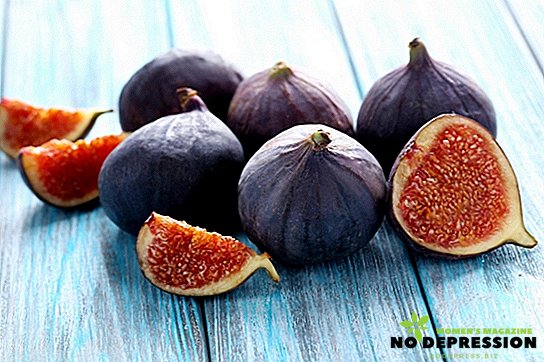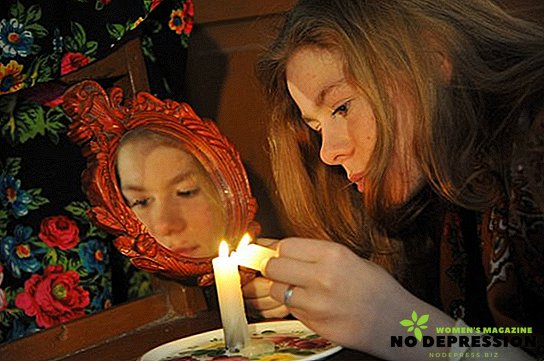It is the retina that is responsible for receiving the image, and it also perceives the light. Violations in its vascular system lead to retinal dystrophy.
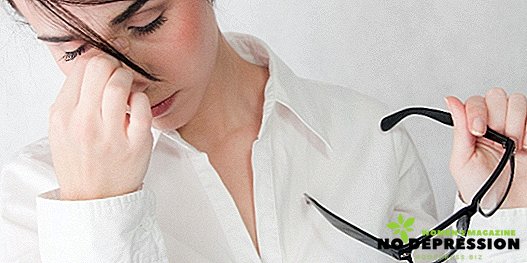
What is retinal macular dystrophy?
Retinal dystrophy is a degenerative disease, after which, unfortunately, the eye cannot fully recover. In the process of disease, retinal tissues are destroyed, and this entails a serious decrease in vision.
In macular dystrophy, the central region of the retina or macula is affected, resulting in impaired central vision. Most often, this disease is sick already older people.
Macular dystrophy is divided into several degrees of light to severe impairment, which is the most dangerous and can lead to complete loss of vision.

But lighter forms of macular dystrophy are accompanied by only minor distortions of vision. This disease of the retina can not lead to complete loss of vision (blindness) because it does not affect peripheral vision.
Causes of the disease
The main cause of macular dystrophy is degenerative changes in the retinal vessels. The consequence of these disorders is the cessation of the performance of its functions by the vessels - supplying the retina with air, which leads to its oxygen starvation.
Macular dystrophy develops mainly in older people over 60 years of age. So the main risk factor for the disease is age, other risk factors can be:
- smoking - it increases the risk of developing the disease several times;
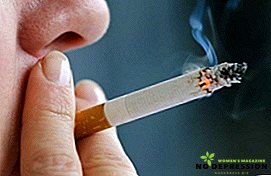
- obesity - studies have found a link between overweight and progression of macular dystrophy;
- race - white-skinned people are more likely to get the disease than African-Americans;
- heredity - the risk of retinal dystrophy increases if it was from close relatives;
- gender - studies say that women are more likely to get sick than men;
- gene mutations - dystrophy is now officially recognized as a disease that is genetically inherited.
The most dangerous risk factors are old age, poor lifestyle and heredity.
Types of disease and their symptoms
Macular dystrophy of any form causes the appearance of a blind spot in the center of the visual field and is divided into two types, due to some peculiarities:
- a dry form of the disease occurs when a yellow patina begins to accumulate on the retina. This plaque has a detrimental effect on photosensitive cells in the macula. About 90% of patients suffer with just such a form of dystrophy, and dry dystrophy develops first on one eye, but eventually goes on to the second. The person notices that he does not distinguish between some objects and colors, there are difficulties in reading and writing. Since this may cause other eye diseases, you should consult a doctor immediately;
- wet dystrophy is much more dangerous than dry, since with it blood vessels begin to germinate behind the yellow spot of the retina. These vessels have the thinnest walls, so they often bleed and the blood from them fills the yellow spot along with the intraocular fluid. These factors cause the photoreceptors of the eye to atrophy and vision is rapidly deteriorating.

Wet dystrophy usually appears on the background of the already existing dry, but much faster and progresses faster. If you do not engage in treatment in a timely manner, then dry dystrophy will grow into a wet one and within 2 years the person will become blind.
Wet macular degeneration occurs only in 10% of patients, but of this amount, 90% have blindness and complete regeneration of the macula.
Diagnosis of retinal macular dystrophy
At the first symptoms of the disease, you must go to an optometrist. Since both macular dystrophy and glaucoma with cataracts cause approximately the same symptoms, it is necessary to conduct a thorough examination of the eyeball. To diagnose macular dystrophy, oculists perform the following procedures:
- Initial examination: measurement of visual acuity, detailed examination of the retina. With this first stage of the examination, the oculist can detect signs of macular degeneration;
- Fluorescein angiography - using this examination, you can identify the location of vessels and their damage. According to the results of the FAG laser treatment is prescribed, if it can still help the patient. The study determines the possibility of treating blood vessels in the "wet" form of dystrophy;
- Indocyanin Green Angiography (IZZA) - examination of the eyeball using intravenous dyes. The retina is photographed in infrared light and determine the signs and type of "wet" form of degeneration.
After a full examination of the patient, he is prescribed the appropriate treatment and laser therapy, if he brings improvements.
Traditional treatment
Each form of macular dystrophy needs its own specific treatment. In addition to the type of dystrophy, the stage of the disease and its severity are important.
However, timely measures can delay and prevent, as far as possible, the progression of dystrophy.
To date, there is no effective medical treatment for dry dystrophy. At this stage of the disease, one can only delay its development and prevent the development of dry dystrophy into a wet one. Prevention is the mainstream in the treatment of this form. With this diagnosis, doctors recommend:
- eat a large amount of antioxidants;
- use additional vitamin complexes with vitamins A, E;
- eat food rich in zinc or use it separately;
- stop smoking;
- adhere to the right lifestyle and proper nutrition.

There is a hypothesis that dystrophy can also cause oxidative processes in the tissues of the eye, therefore, it is recommended to consume foods rich in zinc and antioxidants.
The wet form of macular dystrophy is being treated, and there are three main ways:
- Photodynamic therapy is a blockage of blood vessels in the eyeball with a cold laser. Oozing vessels clog and blood from them, as well as intraocular fluid ceases to flow into the yellow spot of the retina. Therapy has a short-term effect and should be repeated periodically, in combination with the intake of expensive medications;
- Photocoagulation is also a laser procedure in which an optometrist clogs bleeding blood vessels. The laser beam destroys the newly formed blood vessels that have sprouted into the retina. Vision after this procedure stops falling, but to improve it is almost impossible. In addition, the vessels tend to germinate again, so the procedure may need to be a few more times;
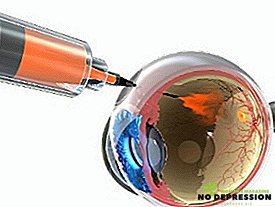
- Endogenous injection of VEGF-factor inhibitors - this procedure involves the introduction into the eye of certain drugs that stop the production of protein, because of which the growth of new vessels begins. Due to the increased protein, the vessels not only start to grow faster, but also collapse more quickly, which leads to accumulation of fluid under the retina. During the procedure, the surgeon relieves the eye and injects the drug into it.
Treatment of macular degeneration is quite expensive and not available in some countries in the post-Soviet space, so you should be regularly checked by an oculist to stop the development of dystrophy at the initial stage.
Treatment of folk remedies
There is no drug treatment for macular dystrophy, and surgery only provides temporary relief. Official medicine recognizes that with such a diagnosis, the treatment is not able to regain clarity of vision.
Sometimes disorders in the retina occur due to malnutrition, so the first recommendation of traditional medicine, and official too, will be proper nutrition.
Traditional medicine recommends introducing into the diet a large number of germinated cereals and legumes. It is easy to germinate cereals:
- Wash grains and sort;
- Put them in a thin layer and pour in enough water to cover them;
- Leave for 2-3 days;
- As soon as the wheat sprouts - wash it and grind in a meat grinder;
- Pour into a dry container and store in a cold place;
- In the morning add 2-3 tbsp. l in food or pour boiling water and eat swollen.

Well helps to restore the level of protein in the body of chickpeas, so it is also recommended to use more often. Add chickpeas to soups, cutlets, cereals and any other dishes. Adhering to a diet should include foods that slow down age-related dystrophy: fruits, green vegetables, greens, tomatoes, blueberries and strawberries, nettles.
Well helps to slow the growth of blood vessels in the retina drops from the mummy:
- 50 gr. pure mummy dissolve in 10 gr. aloe juice;
- mix well and pour into a container from under the drops;
- store drops in a cold place and bury, previously heated, in the eyes 2 times a day, 1 drop.
The composition can not only be instilled into the eyes, but also consumed orally twice a day, 10 ml for 10 days, and then take a monthly break. The course can be repeated endlessly, but it is better to consult a doctor about its use.

Lifestyle with macular degeneration
Because macular degeneration does not affect peripheral vision, a person can see and distinguish between objects and light. Should adhere to the recommendations of the doctor and eat the rule, giving up bad habits.
Due to the fact that there is only peripheral vision, the patient cannot perform petty work or read. You can make life a little easier and adhere to the following tips:
- reading should buy a good bright lamp and direct its light directly to the book in order to increase the contrast of the text or image;
- stop smoking;
- protect eyes from ultraviolet exposure;
- be regularly examined by an ophthalmologist (at least once a year);
- minimize cholesterol and foods that are too rich in animal fats;
- take vitamins with zeaxanthin and lutein
- replace all lamps with halogen lamps, which give a more even light;
- replace paper books with audiobooks.

Despite the fact that the deterioration of vision leads to a passive lifestyle, the choice still remains with the person. There are plenty of tools to diversify your life and not allow the disease to dictate its conditions.
Prevention
Retinal macular dystrophy is not completely cured, therefore all efforts should be directed to its prevention and prophylaxis. For this:
- should adjust the power;
- use vitamin complexes with vitamins A and E, as well as blueberries;
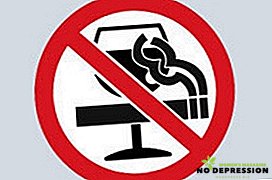
- stop smoking and drink alcohol;
- do a warm up for the eyes during a long work at the computer;
- use proper lighting;
- regularly visit an ophthalmologist.
Preventing the disease is much easier than curing it.
Additional information about the disease can be found in the following video.





